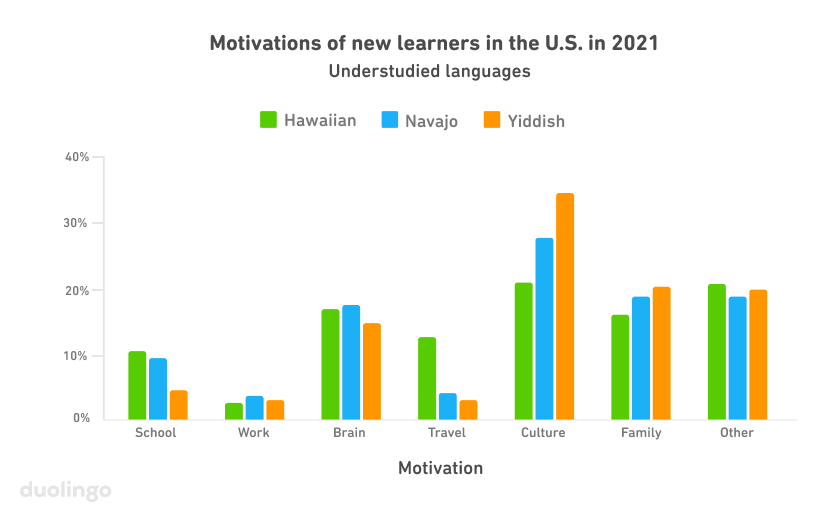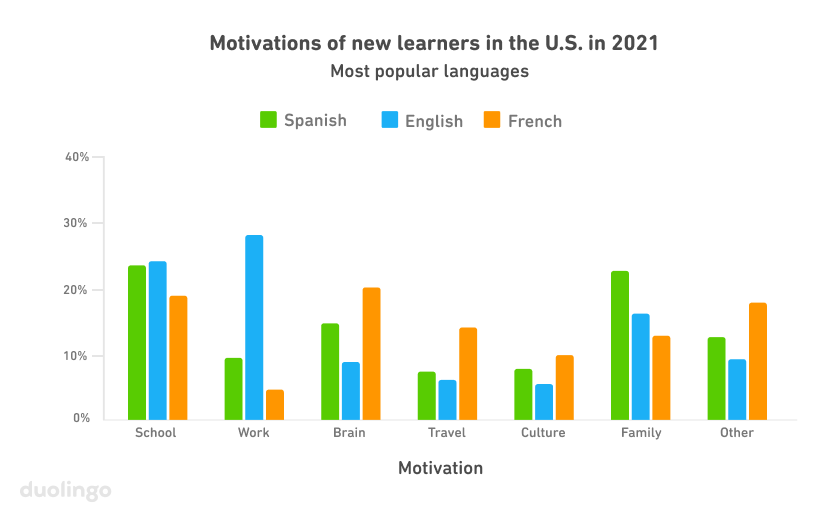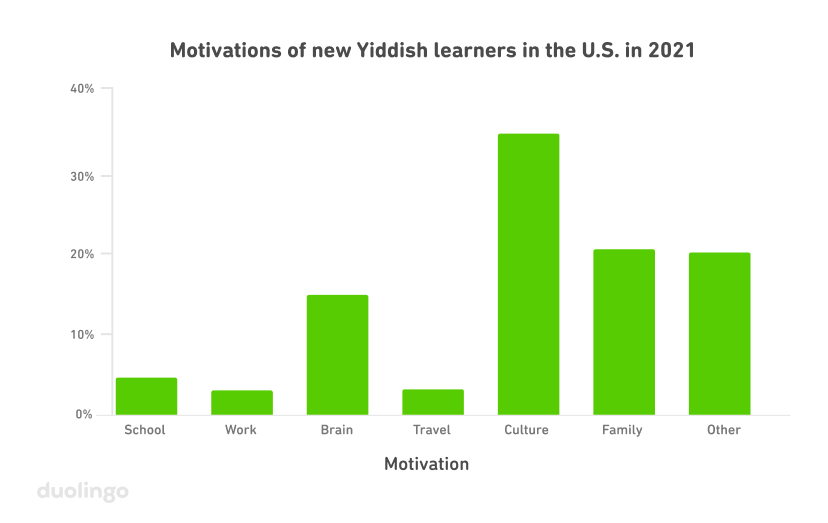More people around the world are learning under-studied languages, according to the 2021 Duolingo Language Report: the list of most popular languages to study by country includes Irish, Swedish, Korean, Japanese, and Swahili. And the list of second most popular languages to study in each country is even more diverse!
What's behind the global movement to study these languages?
Family and culture drive interest in less-commonly-studied languages
There is growing interest worldwide in studying languages for personal reasons. According to the 2021 Duolingo Language Report, for the first time ever, family and friends also became the most popular reason for new U.S. learners to start studying a language! This sentiment is echoed in a recent Duolingo-DKC Analytics survey of people in the U.S., where 70% of those who started learning a language during the pandemic say their learning is related to family heritage, ancestry, or culture.
For many interested in learning family languages, this also means studying a language not traditionally available in classrooms or local schools. More than 27% of survey respondents had a family member from a culture that speaks a language considered endangered, indigenous, or under-studied (such as Yiddish, Navajo, or Scottish Gaelic). Of this group, 90% reported being interested or very interested in learning the family language, with more than two-thirds saying they have even more interest in learning it than their parents.

Learners choosing to study indigenous and endangered languages are motivated by family and culture. In fact, culture is the #1 reason people in the U.S. study six of the seven indigenous or endangered languages offered on Duolingo. The exception is Guaraní, an indigenous language from South America: family is the #1 reason for studying Guaraní! Family is also one of the top reasons U.S. learners study Hawaiian and Navajo.

The importance of culture and family to those learning understudied languages really stands out in comparison to the most popular languages studied in the U.S., Spanish, English, and French. As you might expect, there is more interest in studying for school reasons, and English learners are especially interested in learning for work. But this year, you can also see the growing interest in family languages for those studying Spanish!

People around the world are deeply interested in languages and language learning, but they don't often get to engage with what they really care about in traditional courses. Learners know that language is a way to connect—with friends, hobbies, interests, and our own histories.
A third of Yiddish learners study for culture
In the Duolingo-DKC Analytics survey, learning about a new culture was the top reason people in the U.S. said they might choose to learn a new language, selected by 65% of respondents.
Culture is an especially important motivator for learners studying Yiddish, Duolingo's newest language course: 34% of Yiddish learners say this is their primary reason for studying it! That is more than three times the percentage of learners who are learning for culture in English, Spanish, or French courses in the U.S. Altogether, 54% of Yiddish learners are drawn to the language for family or culture reasons.

Studying outside the box
For English, Spanish, and French, roughly 10% of learners choose "other" -- meaning their motivation for studying a language isn't totally captured by the available options. For indigenous and endangered languages, the percentage of learners choosing "other" is double that!
We suspect that learners choosing this catch-all category are interested in media, entertainment, and music in the language they're learning. Some learners consider these reasons to be part of "culture" and so choose that option as their motivation, but many see media and entertainment as even more specific than a traditional "culture" category: they want to connect with other viewers, follow bands' social media accounts, and interact in a really personal way with the culture, even from their own homes.
We see learners' desire to engage with media and music in our Duolingo-DKC Analytics survey results as well: of those learners who started studying a new language during the pandemic, 69% report practicing the language with TV, streaming media, or movies, and 69% also practice the language through social media. (Fun fact: experts also use pop culture for extra practice!)
We look forward to seeing where learner interests expand in 2022—and love to see people using language to build connections with the world around them!



